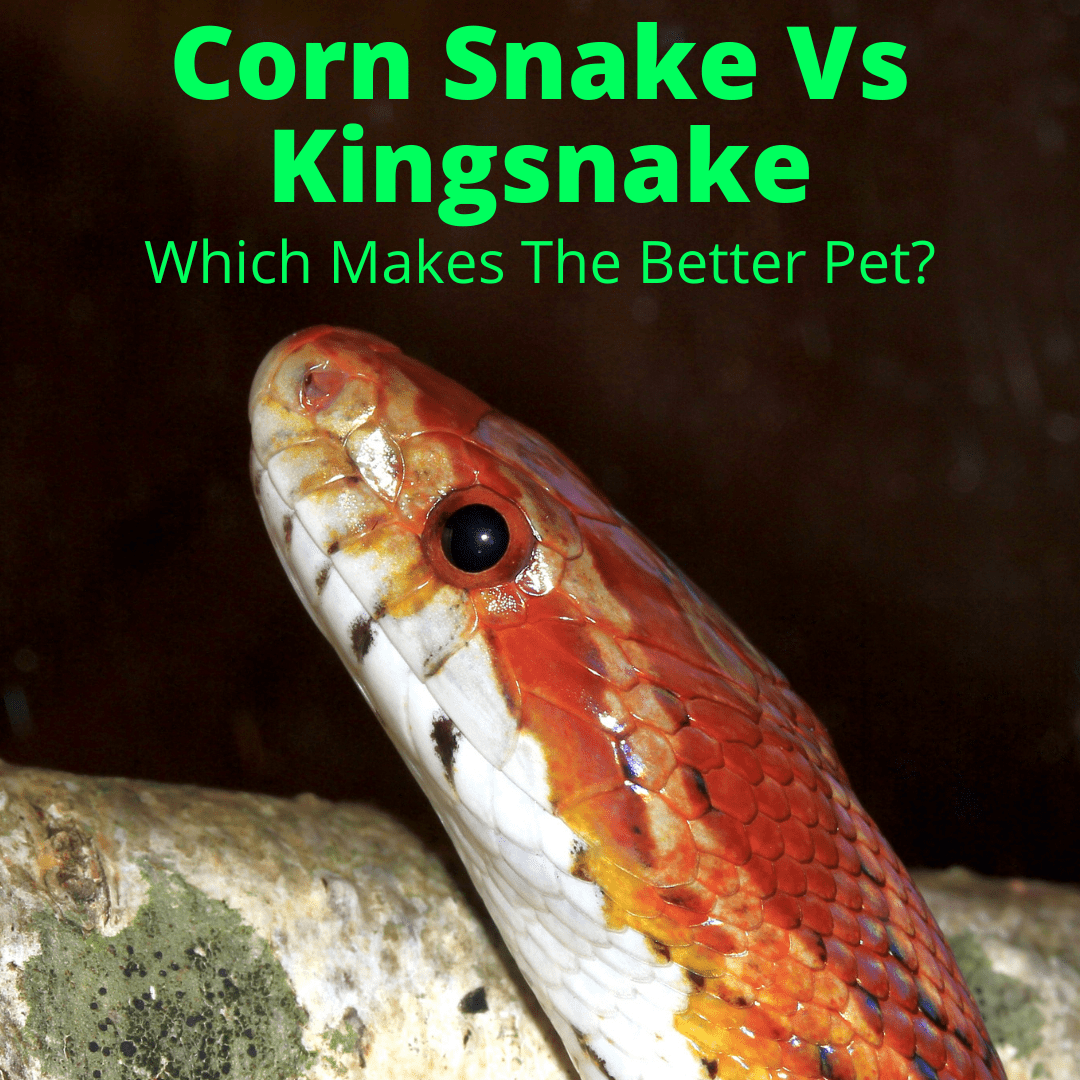
They’re both docile, neither gets overly large and they’re easy to find.
In short: both make excellent pets, especially for beginning owners.
But they do have their differences.
One is much better for beginners than the other.
Their appearance can be similar, but usually differs enough that most people will have a clear preference for one over the other, simply based on their coloration.
Let’s take a closer look and compare kingsnakes and corn snakes, and figure out which one is better for you.
Table of Contents
King Snake Vs Corn Snake
Here is a quick comparison of corn snakes and kingsnakes. We’ll go into much more detail below the comparison table.
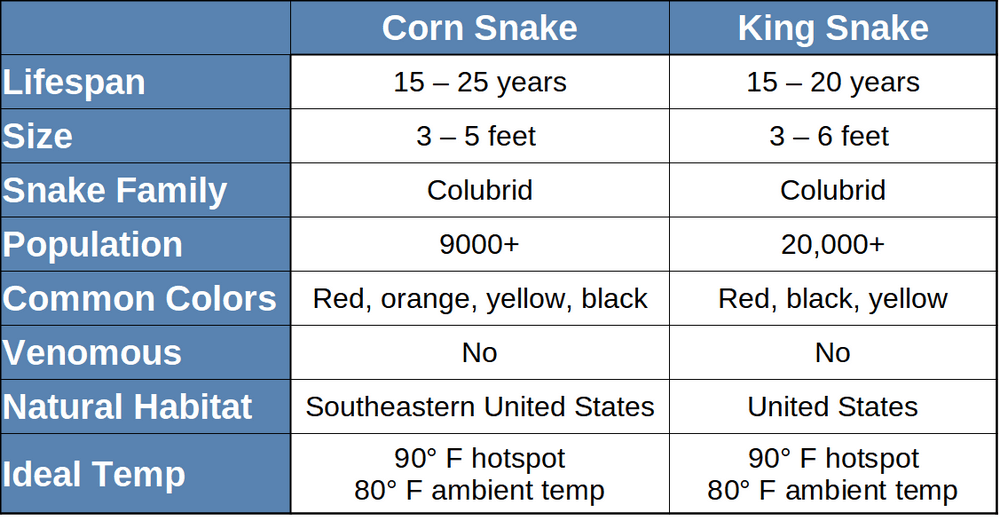
What Is A Corn Snake?
The Elaphe guttata, commonly known as the corn snake or red rat snake, is a docile breed that can grow three to six feet long. The snakes have a life expectancy of 15 to 20 years and are hailed as one of the best snakes for new owners.
They make excellent pets because they allow people to handle them. But they are also expert escape artists.
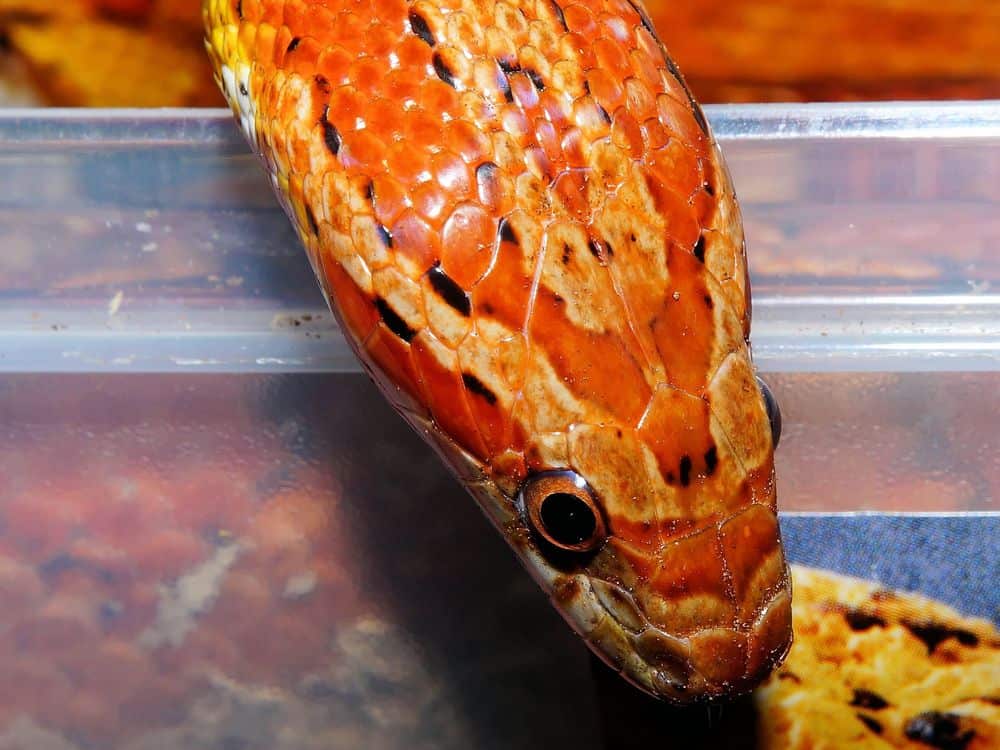
You need to make sure you have a secure enclosure. Otherwise, you might have guests over some day and give them a good scare, due to an impromptu appearance by your reptilian friend.
When it comes to enclosure size, a 20-gallon tank will do. These snakes are smaller in size, making them relatively easy to care for and house. That said, bigger is always better when it comes to cage size.
What Is A Kingsnake?
The Lampropeltis genus, commonly known as a milk snake, or kingsnake, is a species that can grow 14 to 60 inches long. These snakes have a long life expectancy, ranging between 20 to 30 years.
Kingsnakes got their name because they’ve been called the “king of snakes.” The name comes from their habit of eating other snakes. It’s not uncommon for king snakes to eat even rattlesnakes.
Kingsnakes are known for their gorgeous patterns. There are 45 different subspecies of this breed and they all vary in size, pattern, and color. One example is the Mexican Kingsnake which is all black.
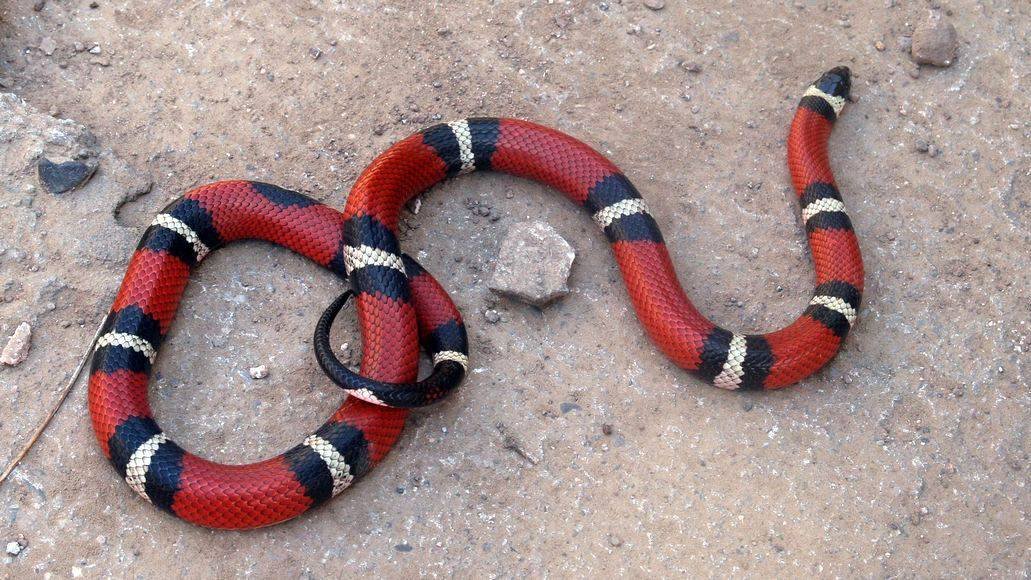
Kingsnakes are an easy to handle breed. They are very low-maintenance when they are comfortable with you.
If you’ve always wanted a pet snake but couldn’t decide on a breed, these guys are also great beginner snakes.
Differences Between Corn Snakes And King Snakes
The main differences between king and corn snakes lie in their breeding, attitudes about their diet, and behavior under stress.
Breeding
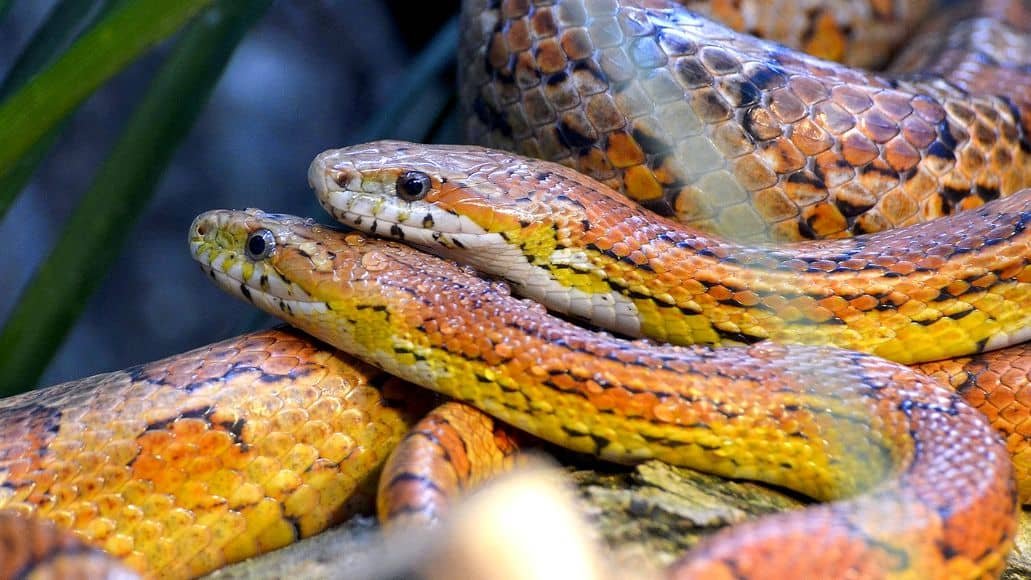
If you’re looking to have some snake babies in your future, the corn snake might be the best choice for you. This species breeds incredibly quickly and lay between 12 and 24 eggs.
Kings snakes can still be bred, but not as easily. These snakes lay up to 10 eggs at a time. The best reptile incubators have plenty of capacity for either species.
Diet
Both snakes share the same likes regarding what they eat, but how they eat can be a little different. Corn snakes are easy to feed and very low maintenance.
On the other hand, Kingsnakes can be a little finicky and less routine with their feeding. Kingsnakes are also known for eating venomous snakes, and they are immune to the venom in general (though it is more of a resistance than complete immunity), something corn snakes are not.
Behavior
Although both breeds are generally docile, it’s important to note that kingsnakes have a bit of an attitude problem compared to the mild-mannered corn snake.
Kingsnakes are eager creatures and can be very aggressive when it comes to feeding. If they see something that moves, they will strike!
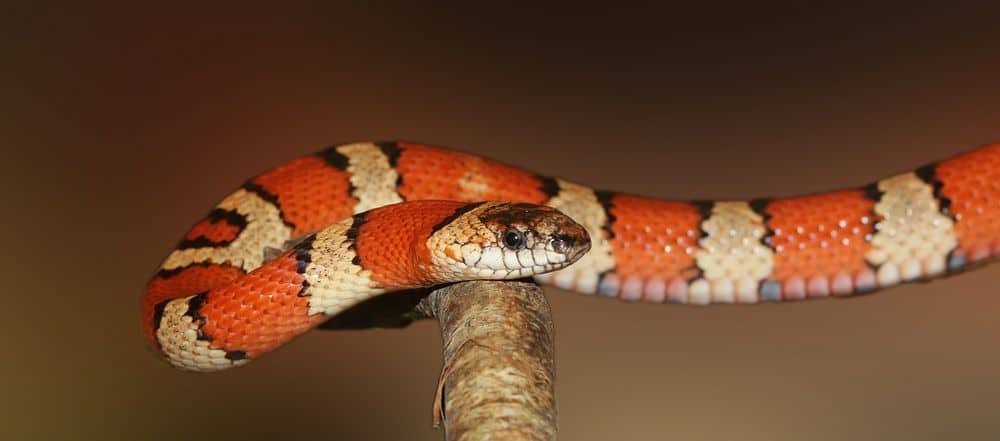
You want to make sure it’s not your finger they’re striking at during a feeding session. Feeding tongs come in very handy here.
They are also prone to biting if they experience stress. In comparison to the corn snake, the king snake is much more aggressive.
Similarities Between King And Corn Snakes
Both corn snakes and kingsnakes are relatively easy to handle and docile. They also have a similar appearance and other features in common.
Behavior
Both snakes are incredibly docile, easy to handle, and have low-key personalities. The chances of either breed biting are very minimal.
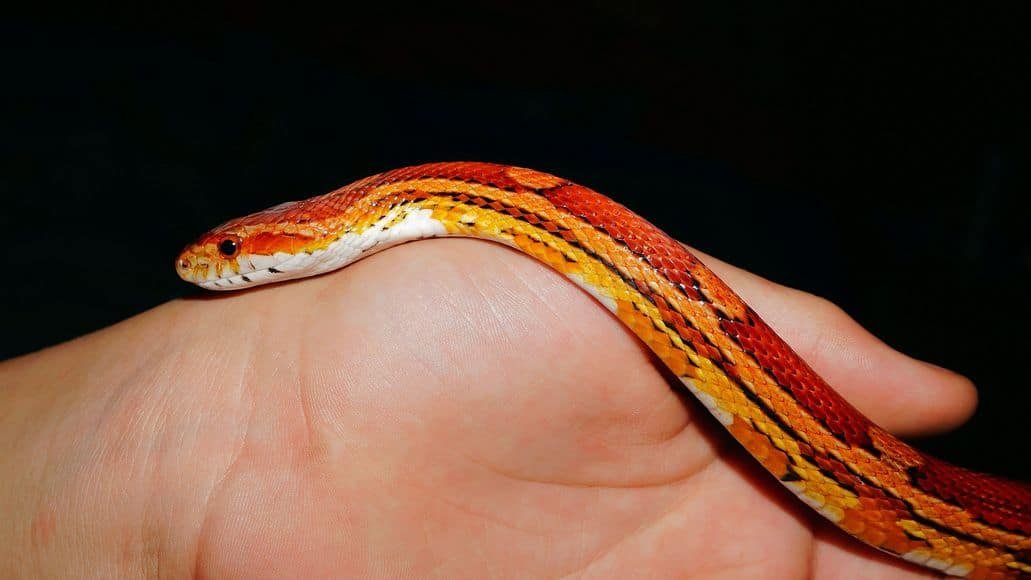
But if a snake gets stressed, there is a rare chance that this could happen.
On another note, BOTH of these breeds are escape artists, so keep their habitats safe and secure. You also want to give them plenty of accessories to play with.
Diet
Both of these snakes share similar preferences when it comes to their diet. They aren’t picky eaters and will eat anything from rodents, to amphibians, to reptiles, to bird eggs, and much more. They will even eat crickets and other insects, although it is not common in the wild.
So you can change it up once in a while to give your reptile friend some variety. I mean, who wants to eat the same thing every day anyway!
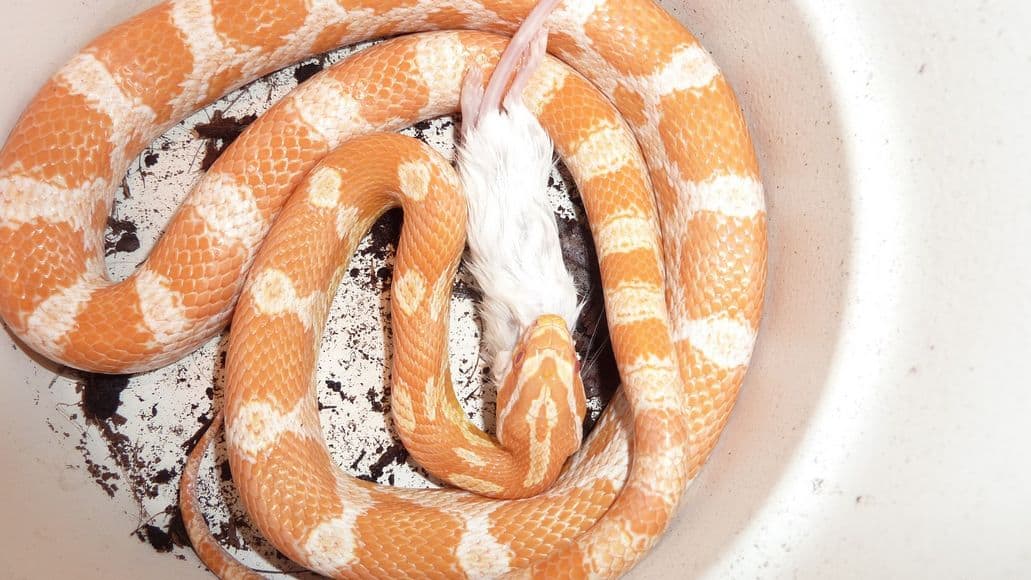
Size/Appearance
Both of these snakes are on the smaller side, with the largest growing to 72 inches (corn snake) and 60 inches (king snake). When it comes to their appearance, these two colorful breeds both come in a variety of colors.
Housing
Both snakes require the same kind of cage, substrate, heat, and light systems. So you won’t need to dish out extra expenses on either one of these snakes. Both the king snake and the corn snake can live in the same size of enclosure. It should be at least 20 gallons. 30 or 40 is better.
Why Should You Get A Corn Snake?
If you are an inexperienced snake owner or have never owned a snake at all, a corn snake is the better choice.
As previously mentioned, this breed is docile, easy to handle, and not prone to aggressive outbursts. They don’t get as irritated as king snakes and other breeds, even when being handled often.
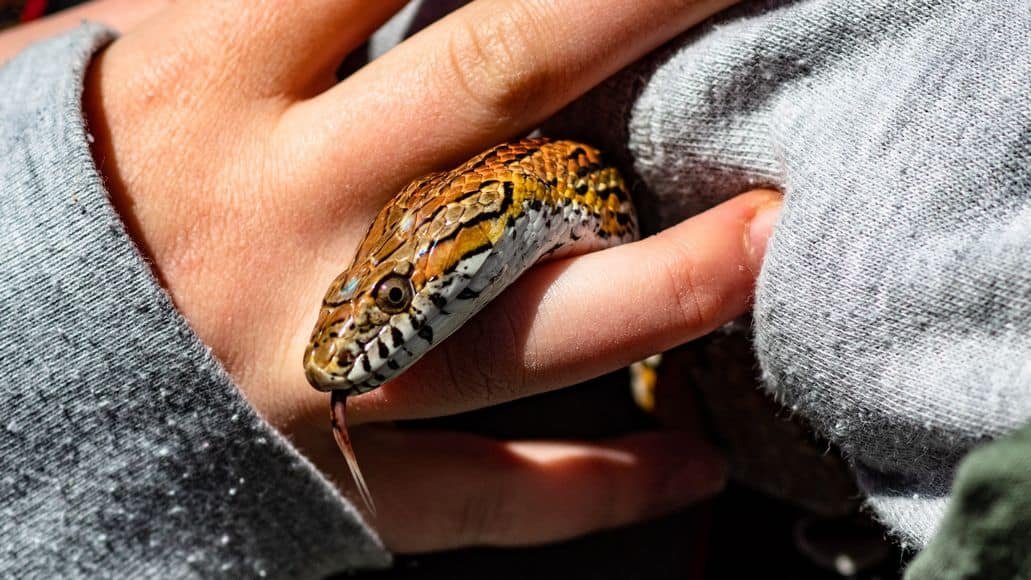
Corn snakes are truly low-key and won’t be bothered with frequent human attention. This snake’s easy-going personality makes it an ideal option for new snake owners.
Another great reason to choose the corn snake is if you’re looking to breed. As mentioned, corn snakes breed easily and lay large quantities of eggs. They are one of the easiest snakes to breed in captivity.
If you’re a first-time snake owner, or someone looking to breed, the choice of owning a corn snake rings loud and clear. It is definitely the best choice for you. Even better, corn snakes cost very little.
Why Should You Get A King Snake?
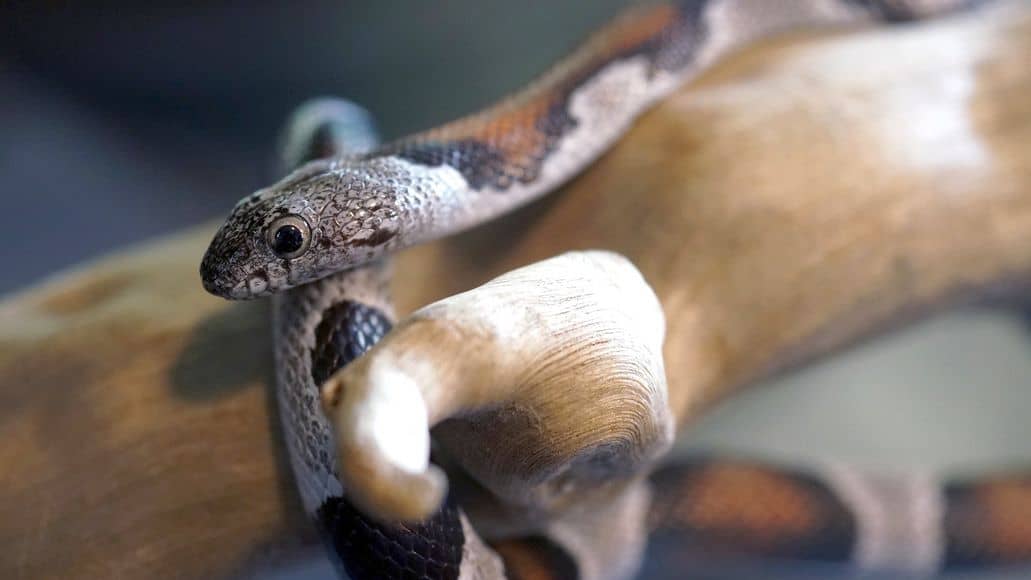
King snakes are also good beginning snakes, but not quite as good as corn snakes.
They make an excellent pet for new snake owners, but have a bigger personality and can be a little trickier to take care of than your average corn snake.
Therefore, we recommend the kingsnake if you already have experience owning and/or interacting with snakes.
Kingsnakes have more character and can make for a more interesting and interactive pet than the corn snake with its low-key and predictable behavior.
Corn Snake Vs Kingsnake: Final Thoughts
Kingsnakes and corn snakes are very similar in many ways. They both make excellent pets, especially for beginners, due to their docile nature and relative small size.
They even look fairly similar, though they are distinct enough that you can easily tell them apart and you will probably have your preference in terms of appearance.
Overall, the corn snake is the easier pet, though not by much. We generally recommend the corn snake over the kingsnake for beginners. For those with some experience, either snake makes a wonderful pet.

You did not mention that kingsnakes squirt out a disgusting smelling liquid when handled. Corn snakes do not.
I disagree with you. I have had both. Corn snake aka Rat snake gets up to 7 feet. They are really great escape artists, and I have found them to be more aggressive than kings. The biggest king I ever had was 5 feet 3 inch. Kings were extremely docile where the Corns were nippy and very flighty. The only reason they didn’t live a very long life is I was at work my wife was out of town and we had a neighbor that hated us and feared snakes. Temp got up over 120 (Palm Springs CA) they unscrewed all my fuses and threw them on the ground. When I got home our dog and cat were dehydrated, they had drunk all their water. All my snakes and fish were dead.